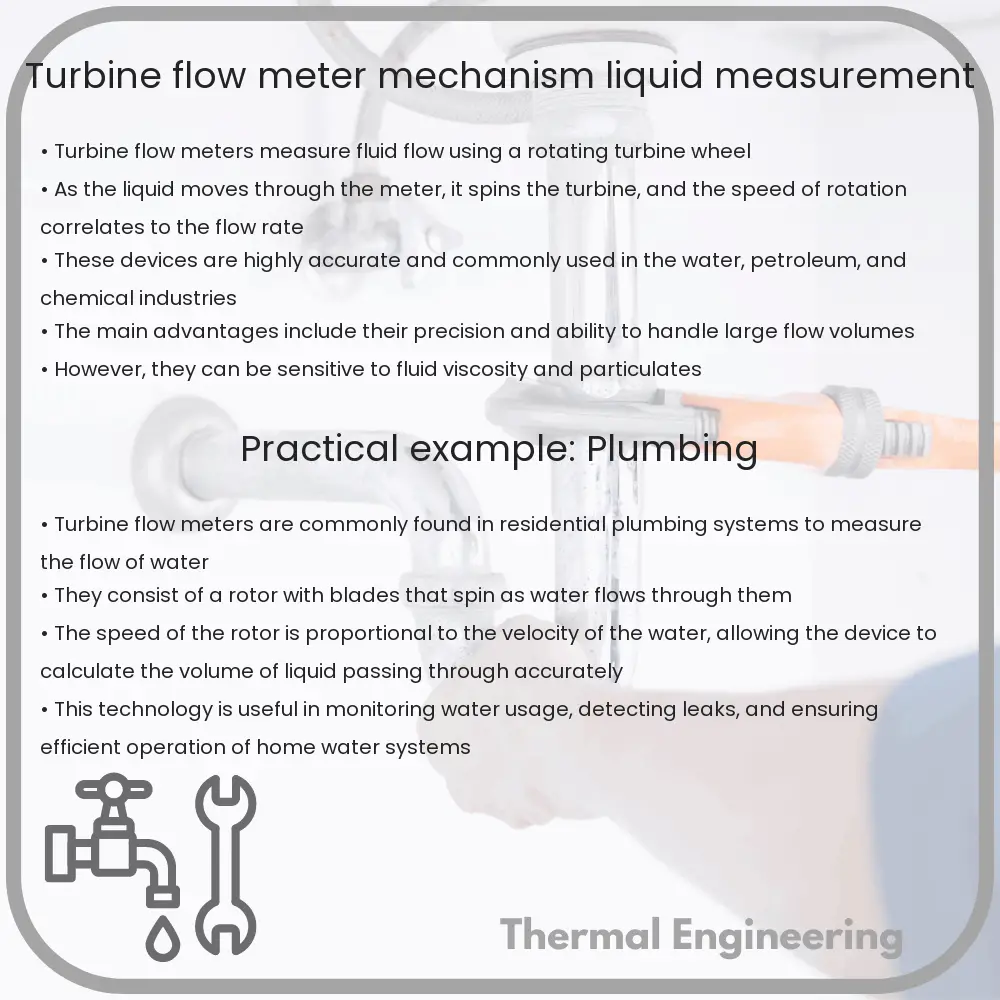Learn about turbine flow meters, their functioning, components, and applications in precise liquid flow measurement.

Understanding Turbine Flow Meters: Mechanism and Liquid Measurement Applications
Turbine flow meters are widely used in various engineering fields for precise measurement of liquid flow. Employing a simple yet effective mechanism, these devices play a crucial role in monitoring and controlling fluid flow in sectors such as water management, oil and gas, and chemical processing. This article explores how turbine flow meters work and their applications in measuring liquid flow.
What is a Turbine Flow Meter?
A turbine flow meter is a volumetric measuring device. It consists of a rotor with blades mounted on a shaft that is placed in the line of flow. The principle behind its operation is quite straightforward: as liquid flows through the meter, it impinges on the turbine blades which then rotate. The rate of this rotation is proportional to the velocity of the fluid passing through the meter.
Key Components and Their Functions
- Housing: Typically made from sturdy materials like stainless steel or brass, the housing contains and protects the internal components of the flow meter.
- Rotor: This is the primary sensing element with blades that spin in proportion to flow rate.
- Shaft: The rotor is attached to a shaft, which supports the rotor and allows it to spin freely.
- Bearings: Bearings reduce friction and wear, aiding the smooth rotation of the rotor.
- Pickup Sensor: Converts the mechanical action of the rotor into an electrical signal that can be recorded or displayed. This sensor usually uses magnetic or optical sensing mechanisms.
Operating Principle
The operation of a turbine flow meter is governed by the principle of angular momentum. The flow of liquid imparts a force on the turbine blades, causing them to rotate. The speed of the rotor is directly proportional to the flow rate of the liquid. This relationship can be represented by the equation:
\[ \text{Flow rate (Q)} = k * \text{Number of rotations (N)} \]
where \( k \) is a constant that depends on the characteristics of the meter and the properties of the fluid.
Calibration and Accuracy
Calibration is crucial for ensuring accurate readings. It involves setting the meter with known flows and adjusting the measurement system to match these accurately. Factors like temperature, viscosity, and pressure of the measured fluid can affect accuracy, and thus, appropriate corrections need to be applied during calibration. Modern turbine flow meters often come with built-in compensation algorithms for these variables.
Applications in Liquid Measurement
- Water Treatment: Turbine flow meters are used extensively to measure water flow in treatment facilities to ensure proper treatment dosages and process control.
- Petroleum and Chemicals: In industries where precise quantification of fluid volumes is necessary, such as in the dispensing of fuels or chemical reagents, turbine flow meters provide reliable and accurate measurements.
- Food and Beverage: These meters are also employed in food and beverage production, for applications requiring stringent monitoring of liquid ingredients.
Advantages and Limitations
The primary advantage of turbine flow meters includes their high accuracy and reliability in steady, clean, and low-viscosity fluid flow conditions. They also feature quick response times and easy installation and maintenance. However, their effectiveness can be compromised by the presence of particulate matter or high-viscosity fluids, which may cause wear or jamming of the rotor. Additionally, abrupt changes in flow rate or direction can adversely affect measurement accuracy.
In conclusion, turbine flow meters are versatile tools for the precise measurement of liquid flow. With proper installation, calibration, and maintenance, they offer effective solutions across various industries where flow measurement is critical to operations and process efficiency.